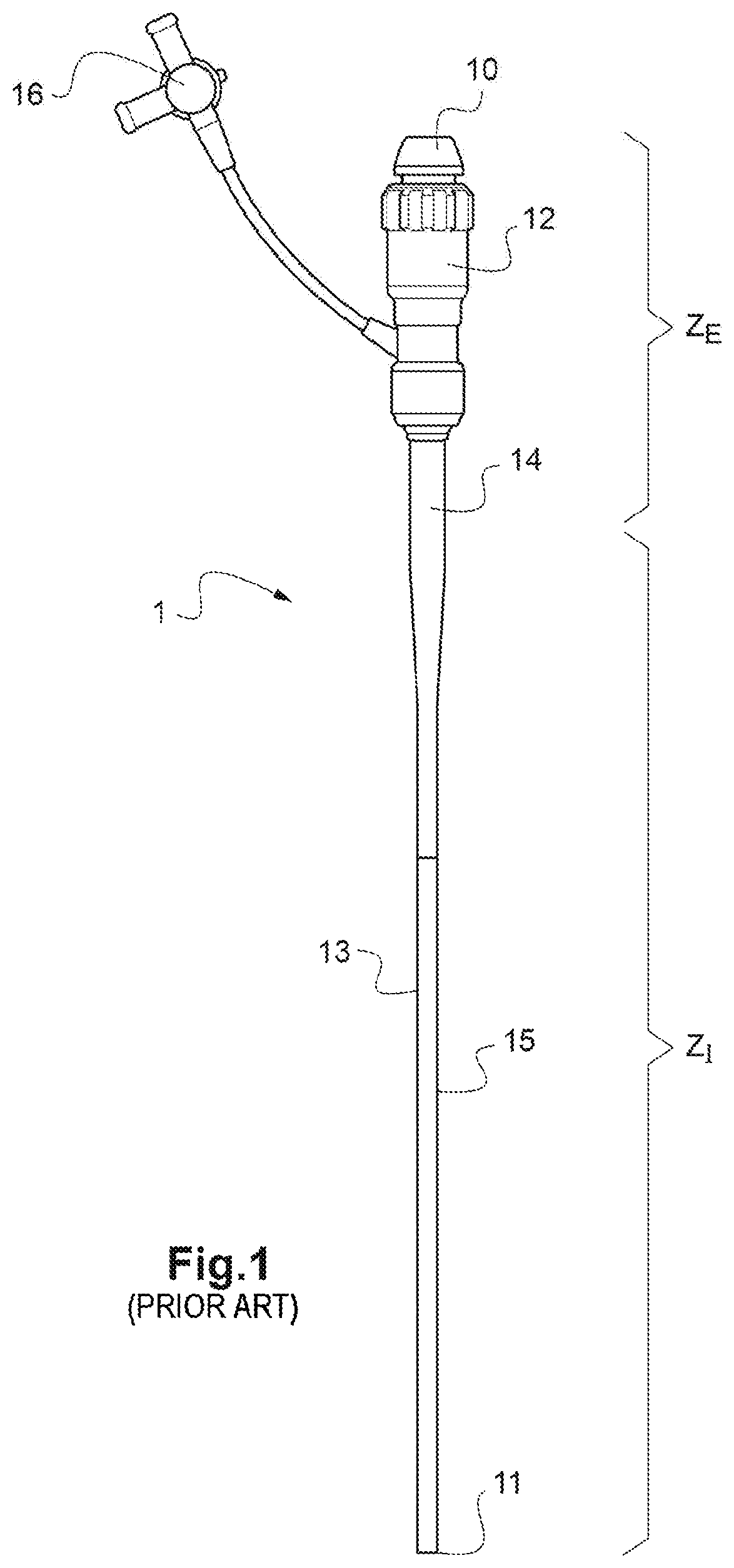Assembly for placement of a cardiac, aortic or arterial implant with stimulation assistance by a peripheral venous or arterial catheter
a technology of aortic or aortic valve and a catheter, which is applied in the direction of prosthesis, therapy, application, etc., to achieve the effects of reducing complications, facilitating connection, and being simpler and faster to carry ou
- Summary
- Abstract
- Description
- Claims
- Application Information
AI Technical Summary
Benefits of technology
Problems solved by technology
Method used
Image
Examples
Embodiment Construction
[0117]Other advantages and features of the invention will become clearer on reading the detailed description of the invention, which is given by way of a non-limiting example and with reference to the accompanying figures, in which:
[0118]FIG. 1 is a perspective view of an introducer according to the prior art, intended to be introduced into a femoral artery in the groin region of a patient;
[0119]FIGS. 2A to 2C show, in partial longitudinal sectional views, various steps involved in sliding a valve catheter into the introducer according to FIG. 1, in order to fit an artificial valve in place as a replacement for a defective native aortic valve;
[0120]FIG. 3 shows, in a schematic perspective view from outside a patient, the step involving the placement of a valve catheter and of the cardiac stimulation electrodes according to the prior art;
[0121]FIG. 4 is a schematic perspective view of a delivery catheter according to the prior art, intended to be introduced directly into the artery o...
PUM
 Login to View More
Login to View More Abstract
Description
Claims
Application Information
 Login to View More
Login to View More - R&D
- Intellectual Property
- Life Sciences
- Materials
- Tech Scout
- Unparalleled Data Quality
- Higher Quality Content
- 60% Fewer Hallucinations
Browse by: Latest US Patents, China's latest patents, Technical Efficacy Thesaurus, Application Domain, Technology Topic, Popular Technical Reports.
© 2025 PatSnap. All rights reserved.Legal|Privacy policy|Modern Slavery Act Transparency Statement|Sitemap|About US| Contact US: help@patsnap.com



